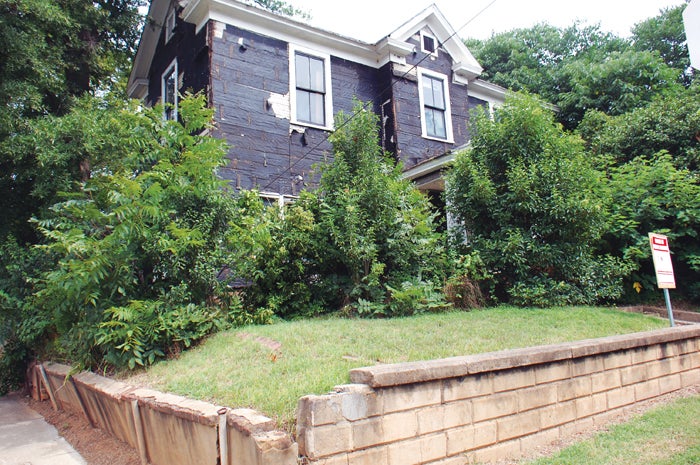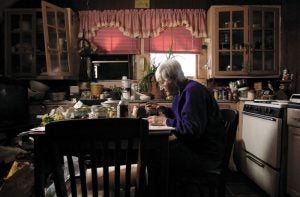230 S. Lee house demolition paused as city, foundation work toward solution
Published 12:00 am Friday, October 18, 2019

- This city-owned house at 230 S. Lee St., now devoid of most of its white siding, is slated for demolition. Mark Wineka/Salisbury Post
SALISBURY — Years ago, Agnes Nasser sold her house with hopes that it would continue to be a home for someone.
The house, at 230 S. Lee St., is now owned by the city. This summer, the city held a hearing after the Historic Preservation Commission delayed a scheduled demolition for a year in March 2018.
The city generally doesn’t own houses, but there’s another notable city-owned home on North Fulton Street. The South Lee Street home is also in the Brooklyn South Square Historic District. According to code services coordinator Michael Cotilla, the city has never processed a demolition in a local historic district in his time.

Agnes Nasser works on a decorated egg at her kitchen table at her home on Lee Street. Jon C. Lake/Salisbury Post file photo
Demolition of the Lee Street house is currently paused, which gives the Historic Salisbury Foundation a chance to figure out a way to save it.
Sada Stewart, executive director of the foundation, said the goal is to save every property, but the foundation doesn’t have the money to do so. They are looking at various ways to bring the home back, stabilizing its structure and flooring, repairing the roof, and fixing finishes.
Stewart says the city, local residents and the City Council are in agreement that they would like to save the house.
“It’s just a matter of who can do it, how it can be done and how much to have it done,” Stewart said.
City Planning Director Hannah Jacobson said the pause has allowed time to do the homework. She said the city code does not require that the demolition question be brought before the City Council but she believes council members should weigh in on the issue.
If the city proceeds with demolition, the Historic Preservation Commission will work to identify architectural materials that can be salvaged and to whom those would go and then landscape the property.
“It’s a city-owned property, so we want it to look nice,” Jacobson said.
Stewart said on the surface, historic elements would be saved, but most of the home would still be lost.
“To take out the railing of this house and sell it to someone else…,” Stewart said. “Yes, you’re getting use out of it, which is great. It’s just not the ideal.
“It’s a piece of a whole, rather than the whole telling the story,” she said.
At a City Council meeting last month, the idea was floated that the property could be transformed into a parking lot to ease constraints for the Empire Hotel redevelopment project. Several council members objected, citing queries from the public and the city’s land development ordinance.
“It would be detrimental to the neighborhood in that when you look at the four corners of that intersection, you have a house, a house, a grassy hill behind Integro and another house,” Stewart said. “To erase that intersection streetscape and make it a place for parking. it changes the feel of the neighborhood. You’re really limiting the residential aspect of the Brooklyn South Square at the entrance.”
Jacobson and Cotilla said they came into their roles after the property was acquired and aren’t sure why the city took over ownership.
“My understanding was the home was already really deteriorated at the time the city acquired it,” Jacobson said.
Jacobson said the city is not in the business of rehabbing structures and relies on nonprofit partners to help with fixing them up.
“It’s not that the city does acquire properties to flip them,” Jacobson said.
Stewart said it’s a shame the house was not maintained, especially with its German siding and beautiful windows and doors.
“It’s a great example of a house that can and should be saved and could have been saved a lot more easily years ago. And now we’re at the point where it’s going to be so costly to save it that we certainly can’t do it alone,” Stewart said.




